|
This document shows the different views for the Demo-Seq to Demo-Seq2 alignment.
When synteny has been computed for the demo, the table will have a checkbox, signifying that
the synteny is available for viewing. Click the cell
again which will enable the viewing buttons, e.g "Dot Plot".
|
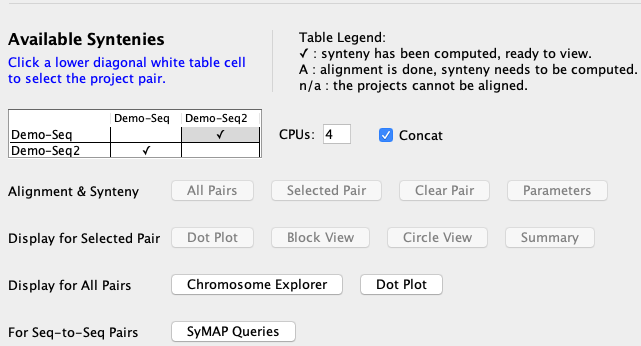
|
| |
|
Click "Dot Plot" and you will see the dot plot shown
here. By clicking and/or selecting regions you can
zoom into certain regions and bring up detailed views
of the alignments. The Help button (question mark)
provides full information on the functions.
|
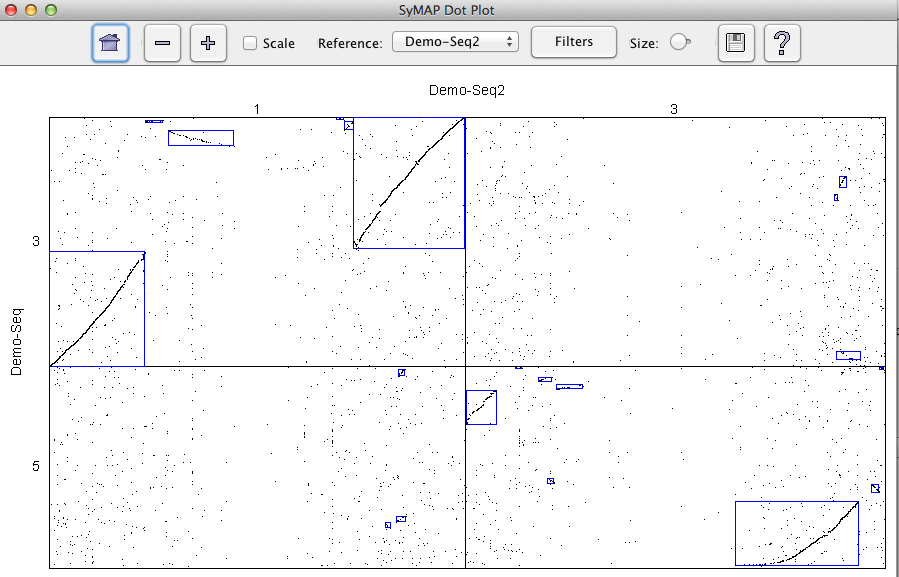
|
| |
|
Return to the Manager, and click the "Chromosome Explorer"
button. This brings up the Explorer, shown at right.
Here you can pick different
sets of chromosomes, using the small icons at left, and see them in different views.
At first you only see the reference chromosome, which is initially chr3 from Demo-Seq
(the reference has a red box around its number).
Click on the icons for Demo-Seq2 chr1 and chr3, to see the Circos-style3 view
shown on the right.
The ribbons represent synteny blocks.
|
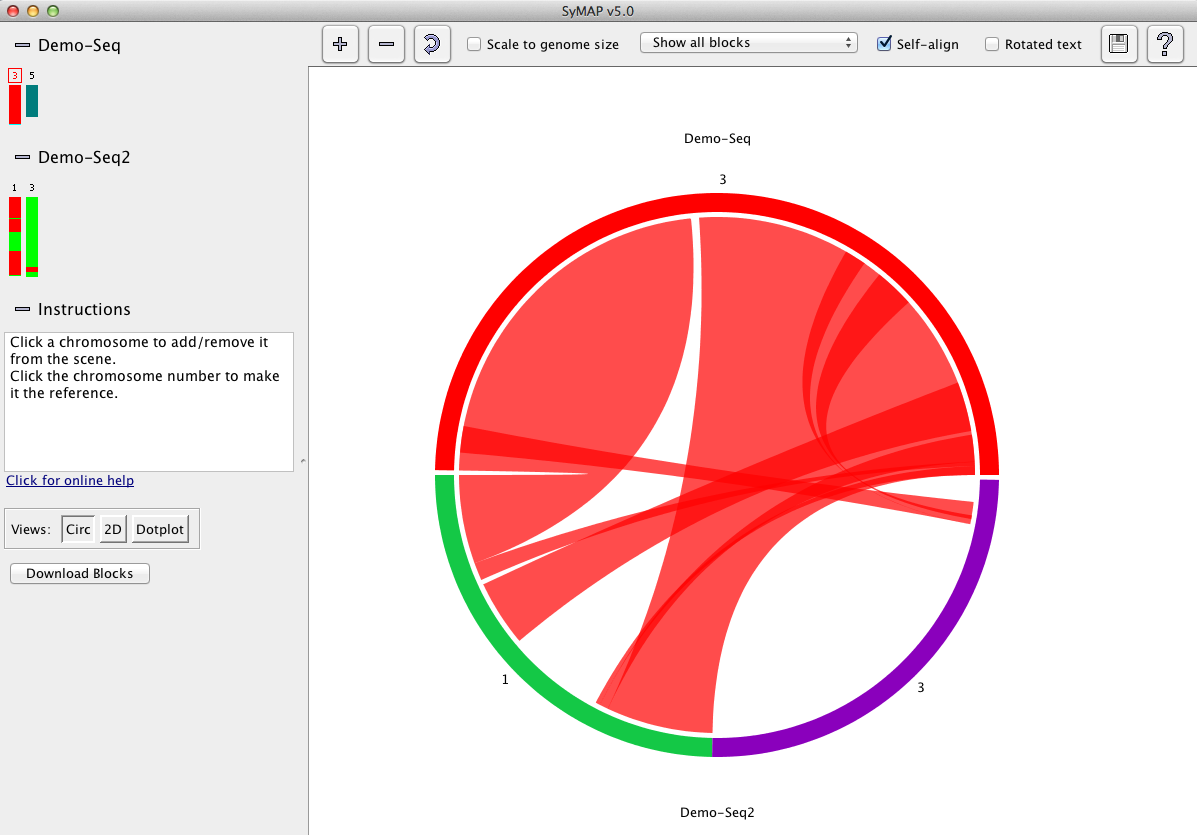
|
| |
|
Click the 2D button to see a side-by-side view of
the same chromosomes. Note that the reference is in the middle.
Brown lines show the individual anchors.
|
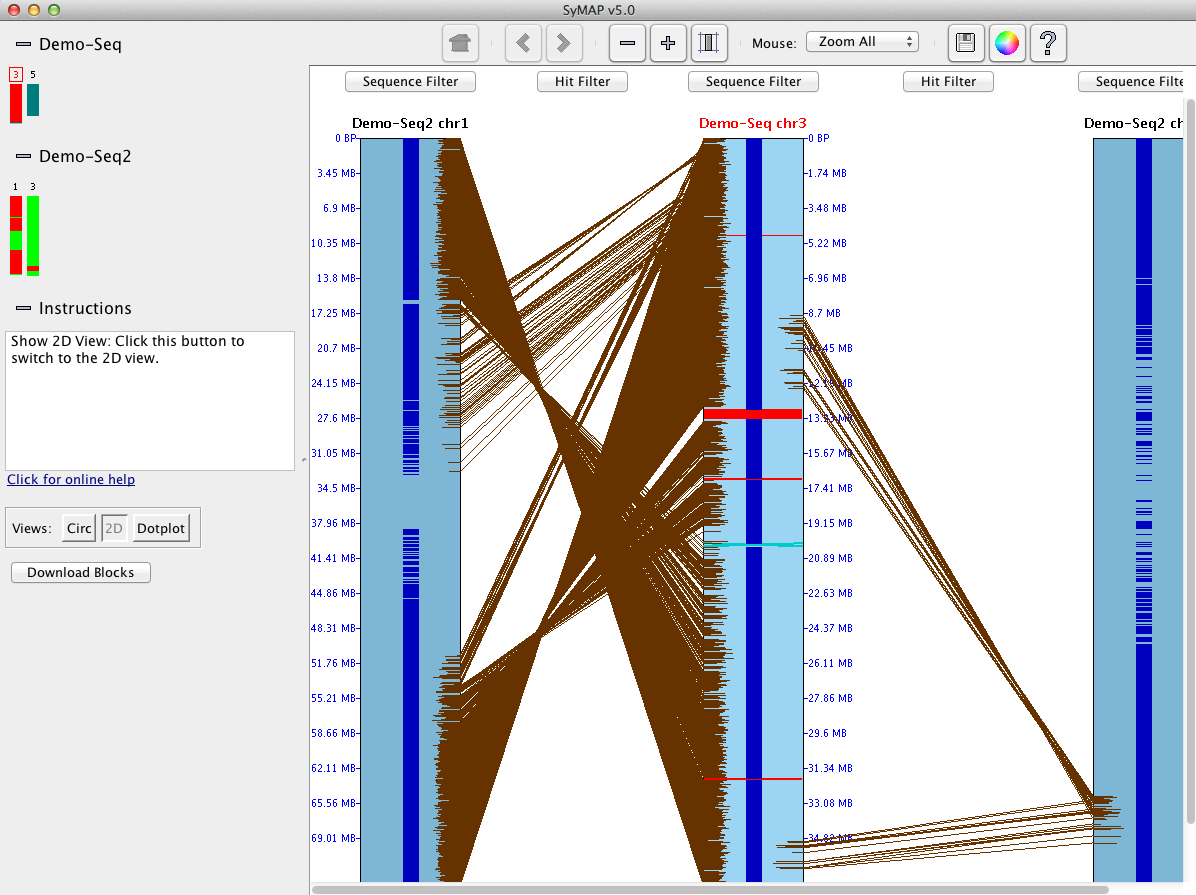
|
| |
|
Selecting a region on one of the sequence tracks using the
mouse zooms to that region.
Now the annotation icons (blue) for individual genes can be seen
in the center of each sequence track.
If you zoom in even closer, then you can click the "Sequence Filter"
button and the top of a sequence track (or right click in the sequence),
and check "Show Descriptions
for Annotations", and you will see the annotation text
for each gene.
|
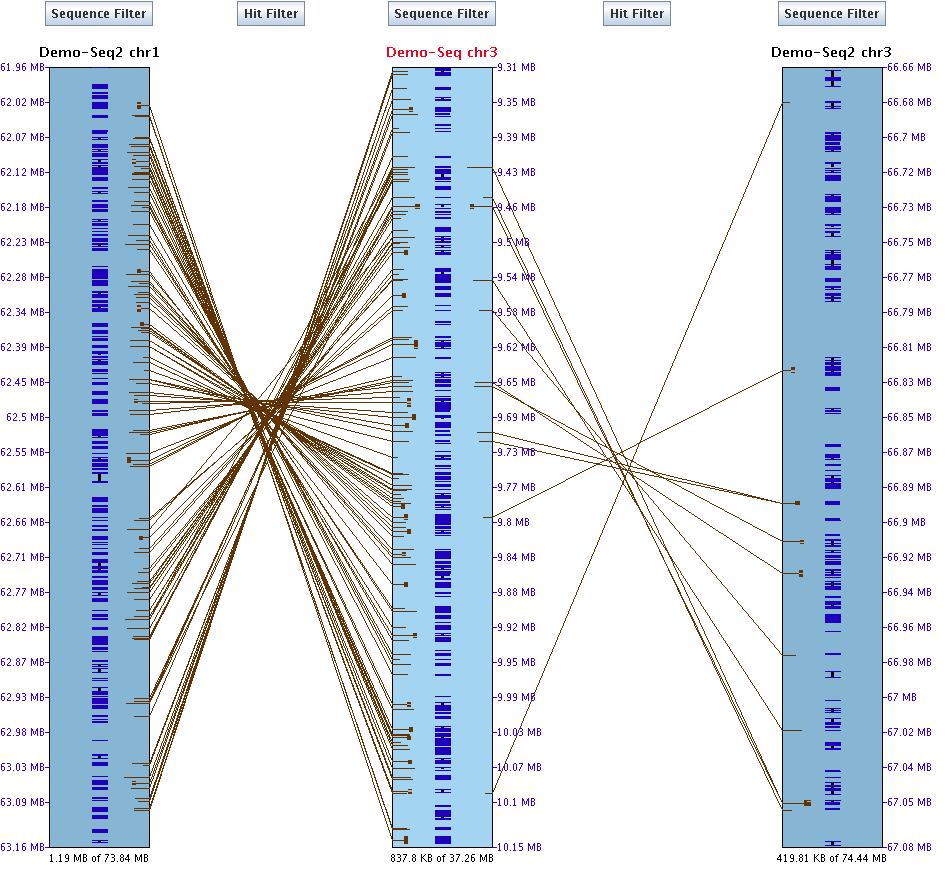
|
| |
|
Returning to the Manager, click the "SyMAP Queries" button. This brings up
the SyMAP Query window in Overview mode. Click the "Query Setup" option
on the left-hand side and you will see the Query Setup window:
The query does two basic things:
A. Locate syntenic regions based on annotation
B. Create putative gene families across the
species by grouping the genes (or regions) which
are connected by anchors.
Enter "glycosyl" for the "Annotation String Search" and press "Do Search".
|
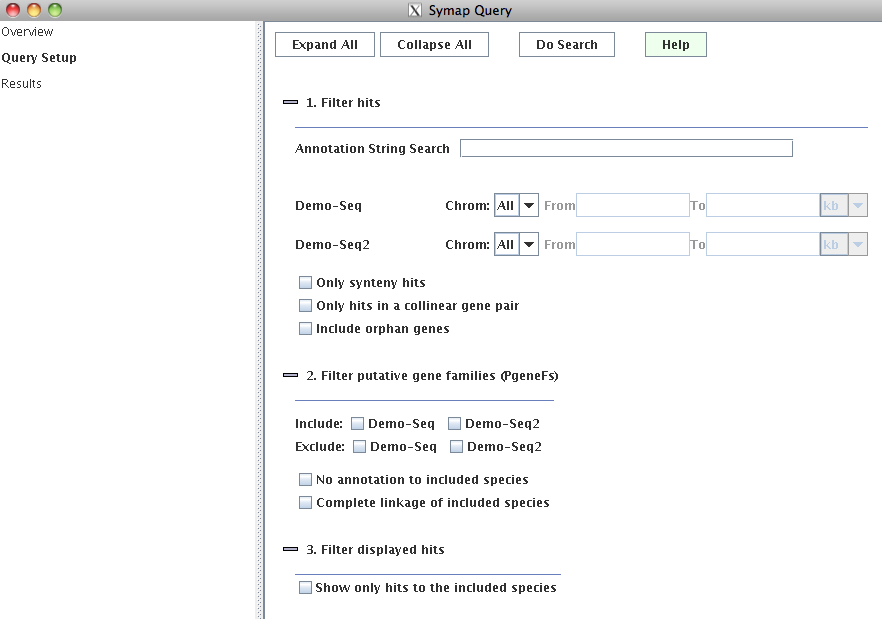
|
| |
|
55 results are returned. Click the "PgFSize" column header to sort by
this column, giving the table at right:
Each row is an anchor connecting two of the chromosomes.
At the top of the table are 7 anchors grouped into a putative
family (PgeneF=25 in the image, but it may
be numbered differently when you run it).
The rows with a non-empty "BlockNum"
are anchors involved in synteny blocks. You could restrict the query
to only these anchors, if desired. Synteny anchors are more likely
to represent a true ancestral relationship; however, synteny blocks
can not always be detected in sparser regions.
If you query with more than two species, you can ask interesting
questions such as "show me the glycosyl-related gene families which
are present in species A and B but not in species C".
|
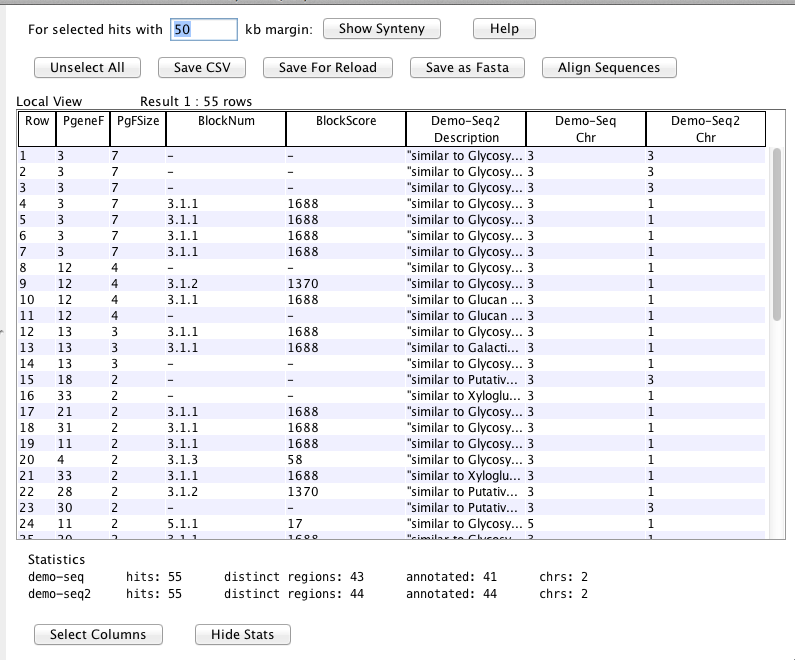
|
| |
3D view
If you have the Java 3D libraries installed, then you can run "symap3D" instead of
"symap".
|
When the "Chromosome Explorer" is shown,
click on the icons for Demo-Seq2 chr1 and chr3. The 3D view will be the
default view as shown on the right.
The ribbons represent synteny blocks (green for inverted).
Everything runs without the 3D libraries except for this display.
|
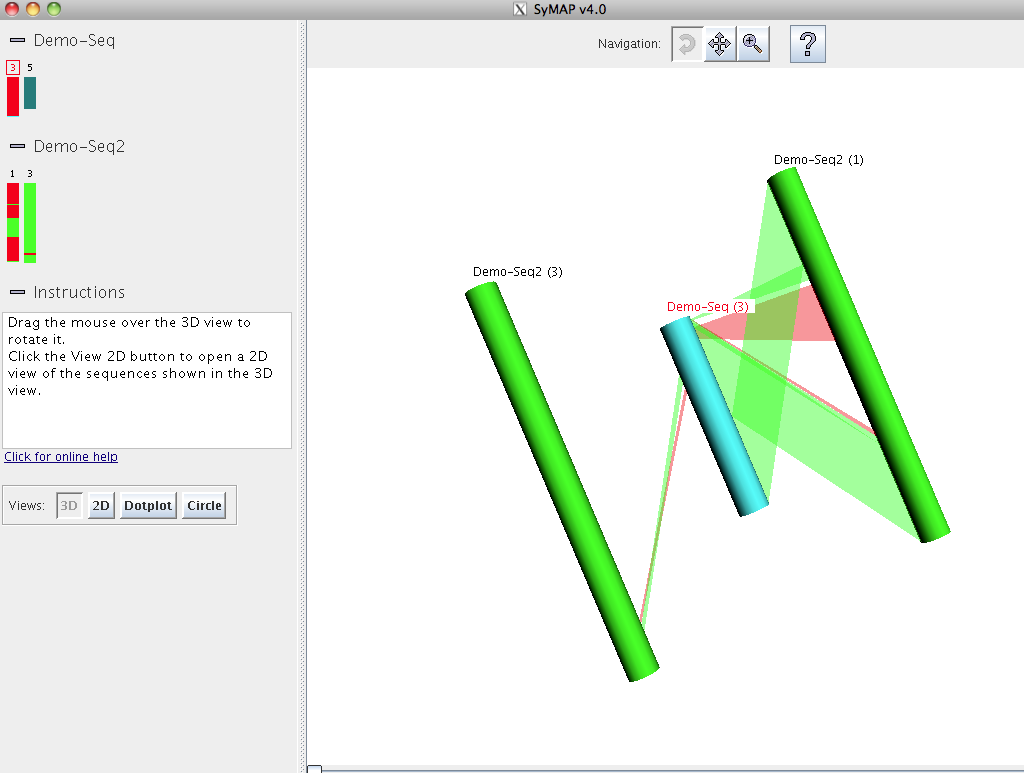
|
Self-synteny of Demo-Seq
|
Demo-Seq has been run against itself, resulting in the Dot Plot shown on the right.
There are a few off-diagonal blocks, which indicate some repetitive-ness.
|
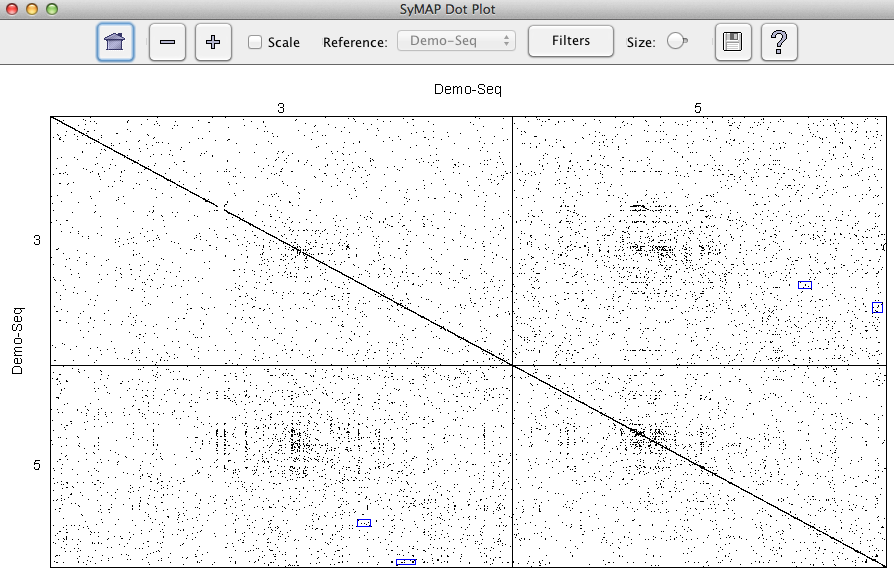
|
Demo-Draft to Demo-Seq2
|
The Demo-draft was run against the Demo-Seq2 with its "order_against" parameter set to Demo_Seq2.
The resulting dot plot is shown on the right. Note that the 43 contigs
are ordered, but still fragmented.
|
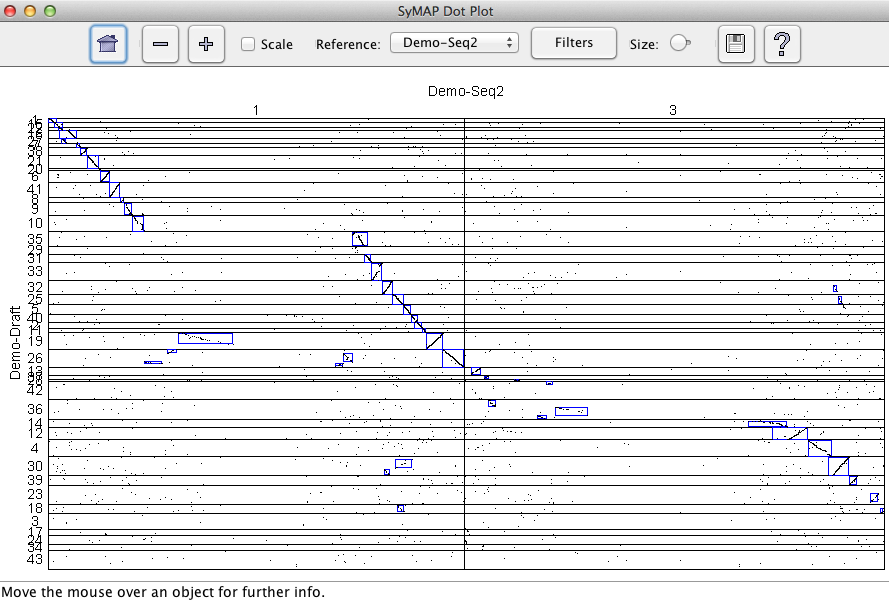
|
| |
|
When the ordering algorithm is run, it creates a new project called "Demo-Draft_ordered",
where the 43 contigs are written into three chromosomes; the first two correspond
to chr1 and chr3 of Demo_Seq2, and chr0 contains the contigs that do not align.
The new project Demo-Draft_ordered
was aligned with Demo_Seq2, resulting in the dot plot will appear as shown on the right.
|
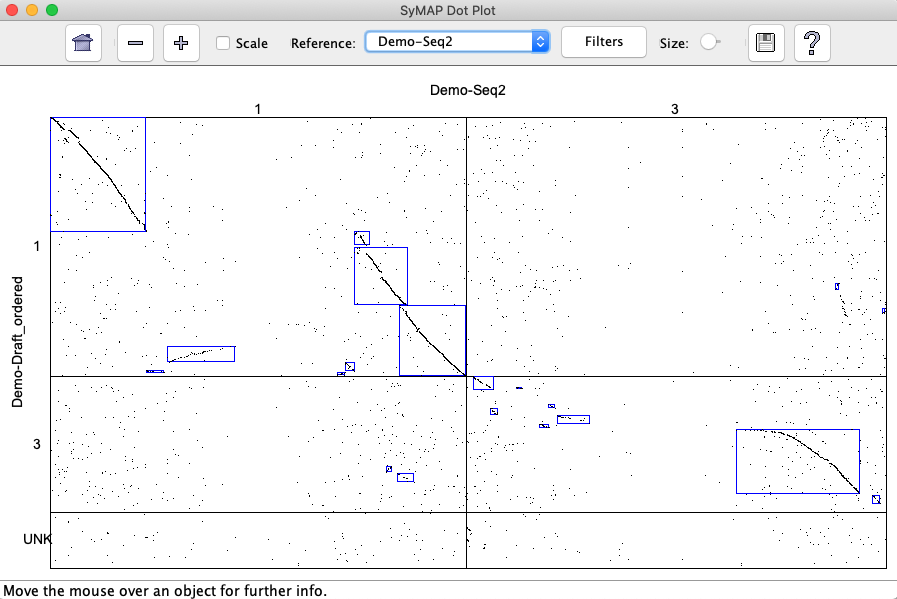
|
| |
|
The Demo_Draft was created from the Demo_Seq with sequence reversal and some other changes.
In the snapshot on the right, the blocks of the Demo_Seq-to-Demo_Seq2 is shown next to
the blocks of Demo_Draft_ordered-to-Demo_Seq2 is shown on the right.
Note that they major blocks are the same, as they should be.
|
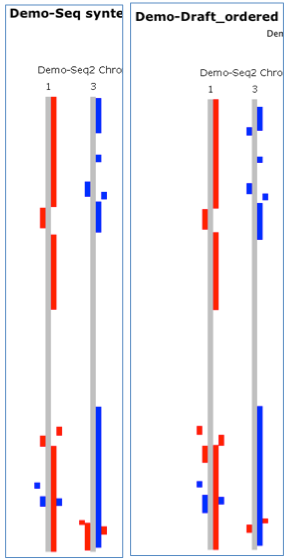
|
Go to top
|













